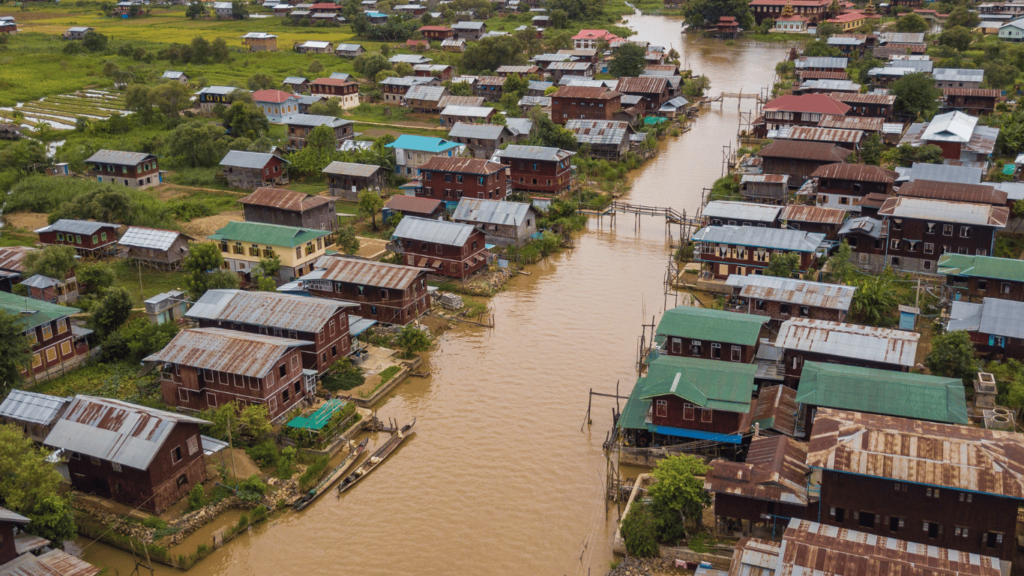Flooding poses a significant risk to homes across the United Kingdom, with climate change increasing the frequency and severity of flood events. Flood prevention plumbing tips for homes are crucial for homeowners seeking to protect their properties from water damage. This comprehensive guide will explore strategic approaches to mitigating flood risks and implementing robust protection measures.

Understanding Flood Risks in the UK
The UK experiences various types of flooding, including river, coastal, surface water, and groundwater flooding. Factors such as heavy rainfall, storm surges, and inadequate drainage systems contribute to these events. Identifying your home’s specific flood risk is the first step toward effective prevention. Utilising resources like the Environment Agency’s flood maps can help determine your property’s vulnerability.
Geographical Vulnerability
The United Kingdom experiences diverse flood risks, including:
- River flooding
- Coastal flooding
- Surface water flooding
- Groundwater flooding
Climate Change Impact
Changing weather patterns have dramatically increased flood probabilities, making the best flood prevention plumbing tips for homes in the UK more critical than ever.
Essential Plumbing Tips for Flood Prevention

Install Non-Return Valves
Non-return valves are crucial in preventing floodwater from entering your home through drainage systems. By allowing water to flow only in one direction, these valves stop sewage and floodwater from backing up into sinks, toilets, and other outlets. It’s advisable to have a professional plumber install these valves to ensure proper functionality.
Elevate Electrical Systems
Raising electrical sockets, switches, and appliances above potential flood levels reduces the risk of electrical hazards during flooding. The HomeOwners Alliance recommends positioning electrical outlets at least 1.5 metres above floor level to minimise damage and enhance safety.
Implement Sump Pumps
Sump pumps are effective in removing accumulated water from basements or low-lying areas. Installed in a sump pit, these pumps automatically expel water away from your home, preventing interior flooding. Regular maintenance is essential to ensure their reliability during flood events.
Use Water-Resistant Materials
Opting for water-resistant materials in areas prone to flooding can significantly reduce damage. For instance, using ceramic tiles instead of carpets and installing plastic skirting boards can help. Additionally, applying sealant to exterior walls can prevent water ingress.
Install Flood Barriers and Airbrick Covers
Temporary flood barriers can be placed at doorways and other entry points to prevent water from entering. Similarly, airbrick covers can be fitted over ventilation bricks to stop water ingress while maintaining necessary ventilation when not in use. These measures are cost-effective and can be quickly deployed in anticipation of flooding.
Advanced Flood Prevention Strategies

Landscape for Flood Defence
Altering the landscape around your home can direct water away from the property. This includes creating slopes, installing drainage channels, and utilising absorbent materials in your garden to reduce surface water accumulation.
Waterproof Basements and Cellars
Basements are particularly susceptible to flooding. Waterproofing involves:
- Applying sealants to walls and floors.
- Installing drainage systems.
- Ensuring proper ventilation to prevent moisture build-up.
Regular inspections and maintenance are crucial to maintain the integrity of these waterproofing measures.
Regular Maintenance of Drains and Gutters
Keeping drains and gutters clear of debris ensures efficient water flow away from your home. Regular inspections, especially before the rainy season, can prevent blockages that may lead to water overflow and potential flooding.
People Also Ask
How can I stop flood water from entering my house?
Installing flood barriers, non-return valves, and sealing potential entry points are effective methods to prevent floodwater from entering your home.
What are the best flood defences for homes in the UK?
Combining measures such as sump pumps, airbrick covers, raised electrical systems, and landscaping can provide robust flood defences for UK homes.
How do I flood-proof my home in the UK?
Assess your flood risk, implement both resistance and resilience measures, and maintain regular upkeep of your property’s drainage systems to effectively flood-proof your home.
Plumbing Services
For professional assistance in implementing these flood prevention measures, consider consulting experts like Jones the Pipe. Our UK-based services offer tailored solutions to safeguard your home against flooding, ensuring peace of mind during adverse weather conditions.
Conclusion
Protecting your home from flooding requires a proactive approach, combining practical plumbing tips with advanced preventive strategies. By staying informed and prepared, you can significantly reduce the impact of flooding on your property.

